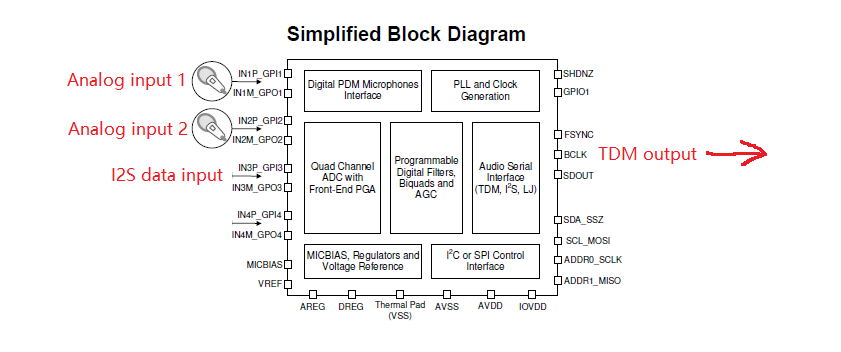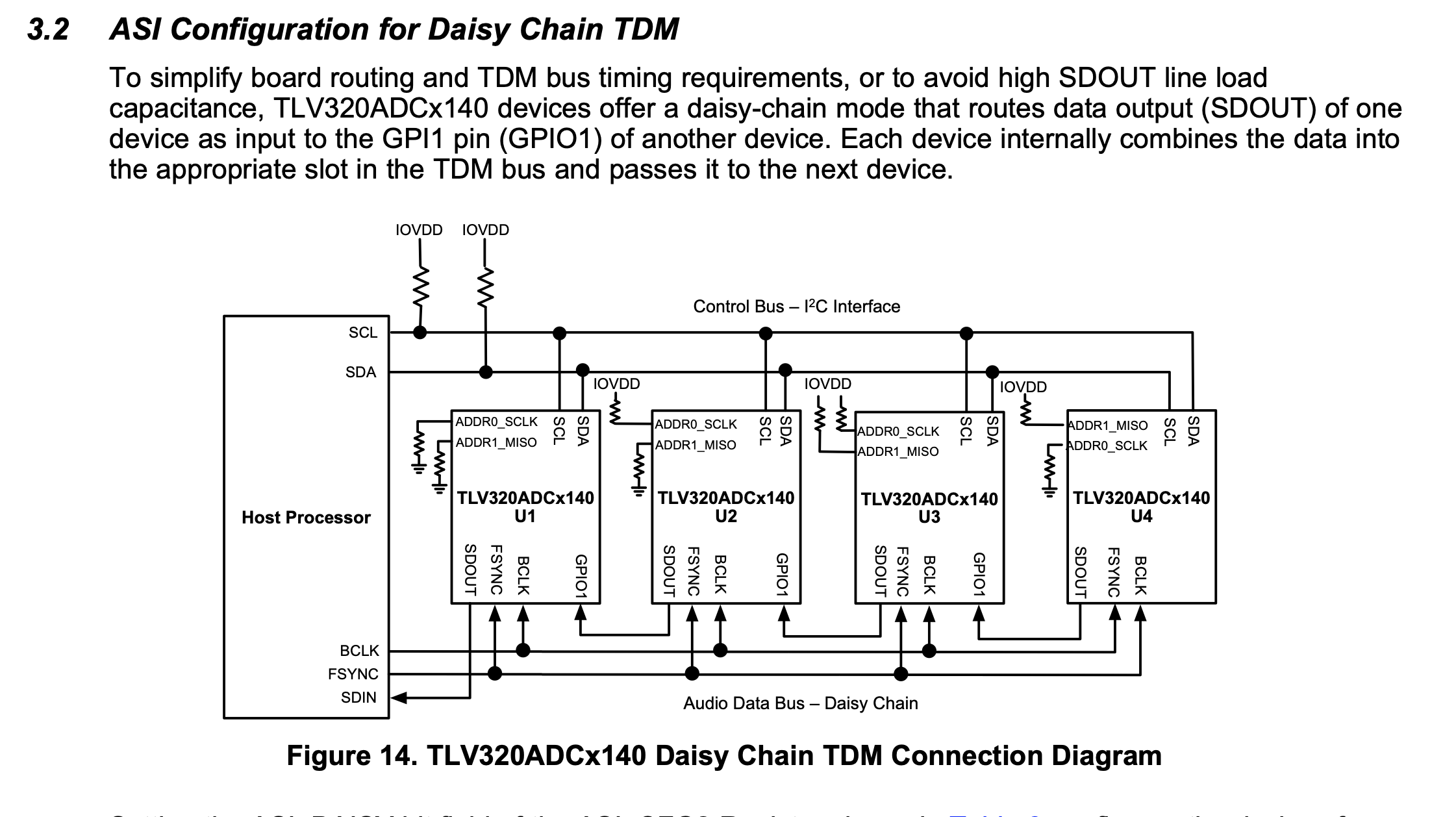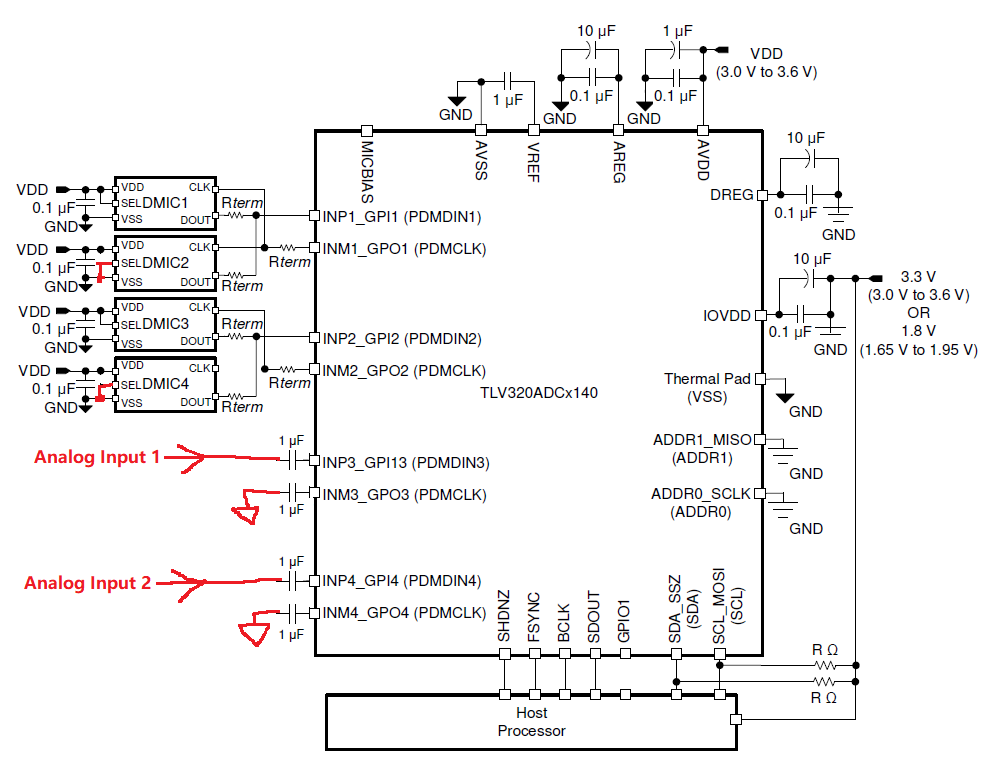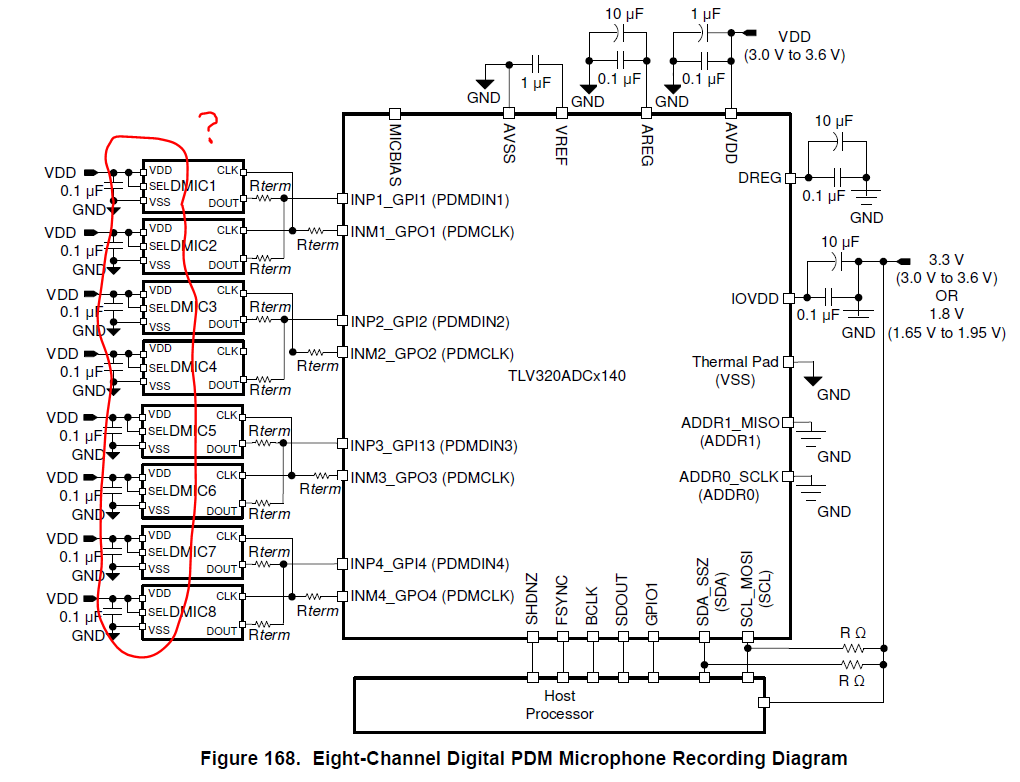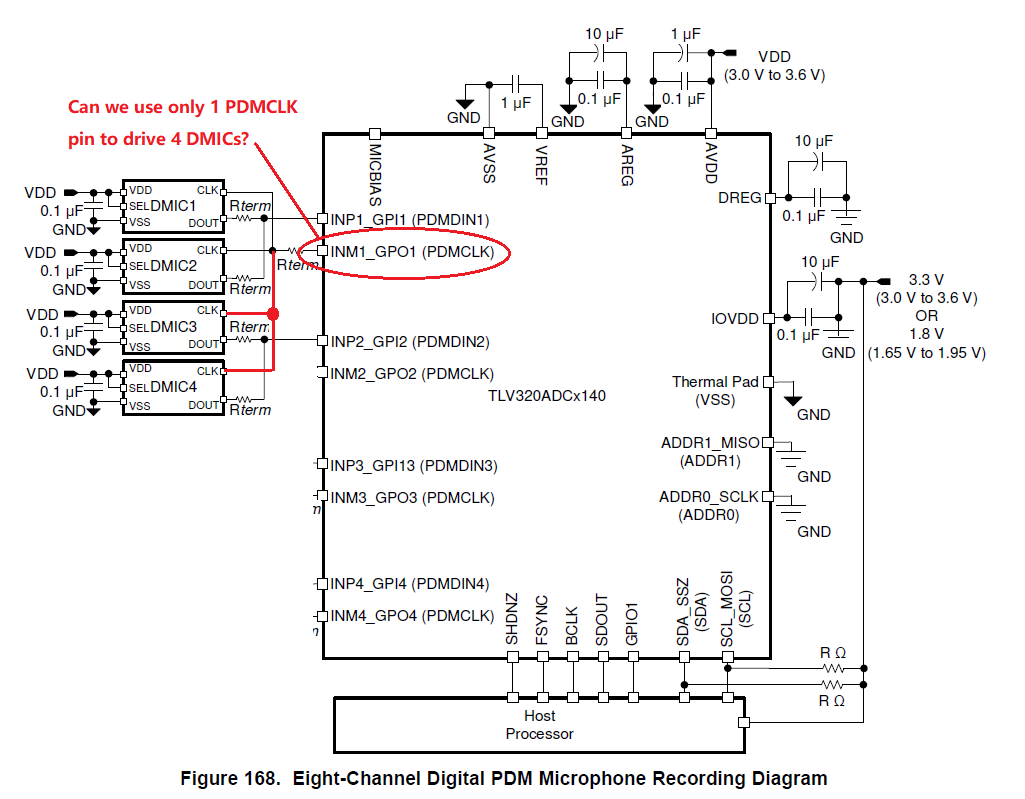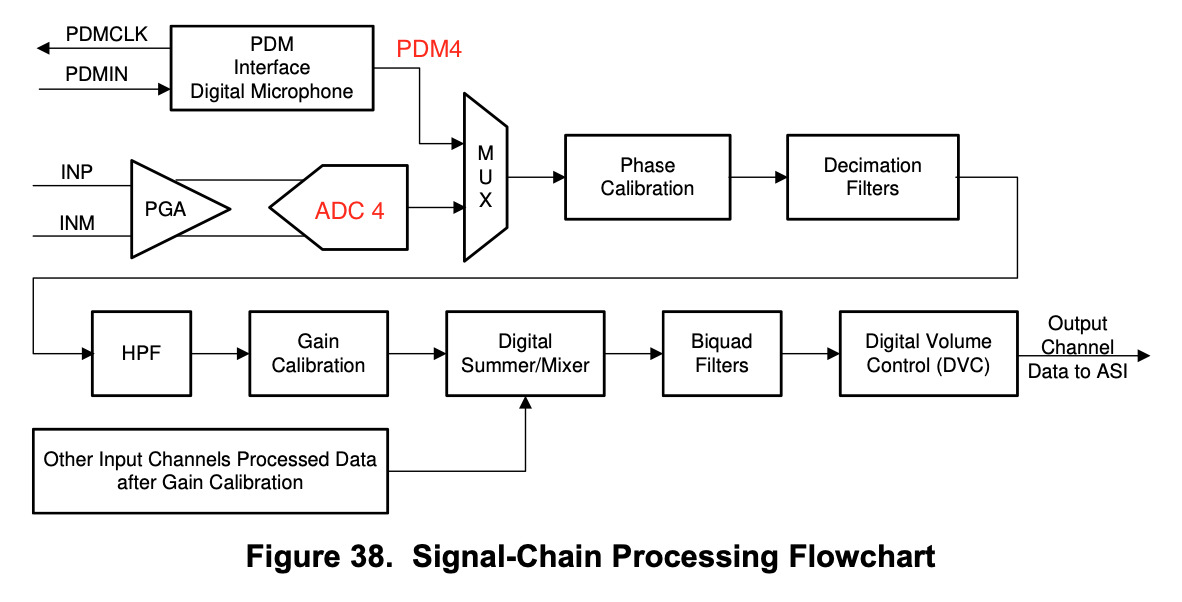Hi Experts,
Our customer wants know if our TLV320ADC3140 GPIO pins can support I2S data input function like ES7243, can you help to check if we can do this or not?
ES7243 TDMIN function(customer used as the I2S data input, then combined another two channels analog input to TDM output):
http://www.csjwell.com/home/3/3/anlr9q/resource/2017/08/14/5991c65bbf580.pdf
Can we achieve below function using TLV320ADC3140?
Thanks.


